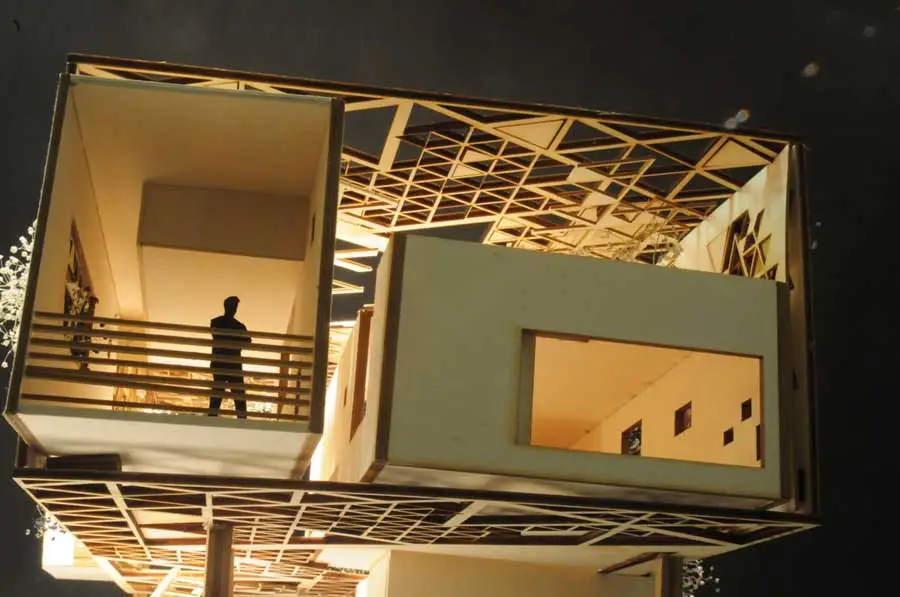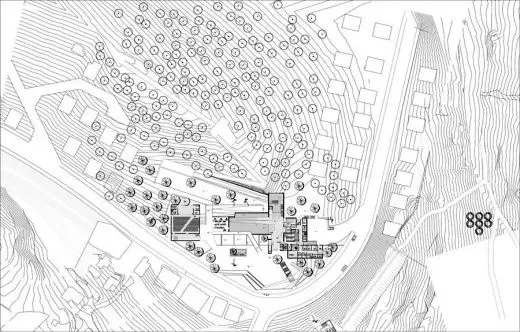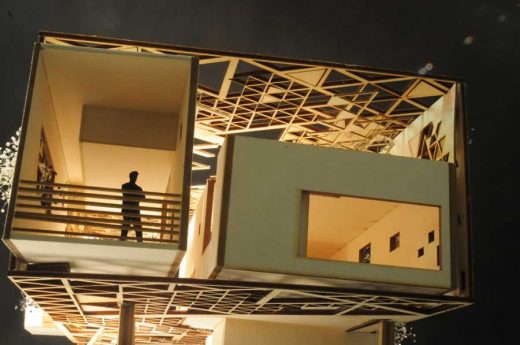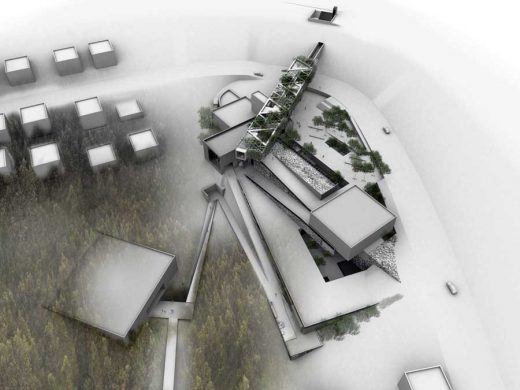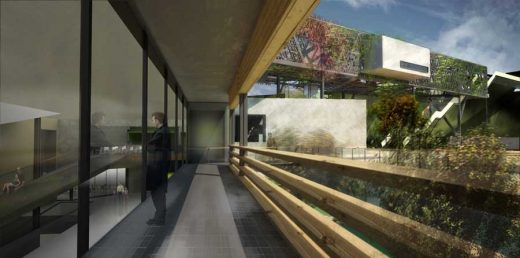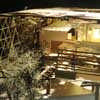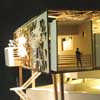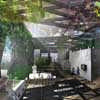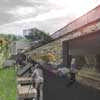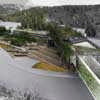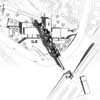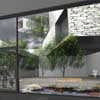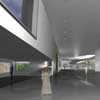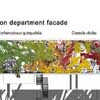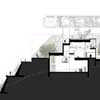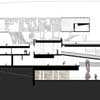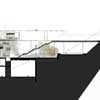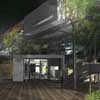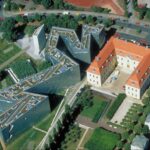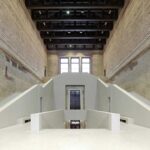Umm el-Fahem Museum, Israel Architecture Image, Architect, Design Proposal
Umm el-Fahem Museum for Contemporary Art
Contemporary Northern Israel Building design by SO architecture
post updated 16 May 2021 ; 1 Jan 2009
Umm el-Fahem Museum for Contemporary Art Israel
Design: SO architecture
Umm al-Fahm is a city in the Haifa District of northern Israel
The Function of the Museum
Today, in the third millennium, amid the daily reality and worries about war and economic hardship, a museum of contemporary art will be built, and will thus form an island of tranquility, exhibiting the richness of Arab culture in Israel.
The plans for the building of the museum offer it as a symbol, radiating openness to the different and the new, so that it will form a proper stage for Arab-Israeli culture and art, that, while maintaining strong links to the past, looks confidently and optimistically into the future.
The open and rich space, the use of terraces and vegetation, the flow of the layout, the structural steel details, the plaster, the reference to the surrounding view and the relation to the hills; all are represented in the project and are a derivative of Arab buildings and creative work, taking twenty-first century building technology and capabilities into account.
Concept
The proposed project aims and acts architecturally to place education as its goal.
Education is the key to cultural and artistic growth, economic prosperity, and peace.
Therefore, and in contrast with the norm for musea the world over, we chose to emphasize education as the central wing of the museum.
The entrance from the parking lot is to the educational building which incorporates an element of a modern “mashrabyia”, vegetation, and architectural elements that accentuate the view of Umm el-Fahem and Wadi Ara.
As part of the concept of the museum as an educator, the project was planned as an open space, stimulating curiosity, and inviting exploration of all its wings. The museum opens up to the town and it is possible to get the feel of it also on the path from the square to the wadi.
The walk around the museum, and the educational and cultural activities that will take place in the square, will be an invitation to the public to enter and to the experience the joy of the arts from up close.
The Site
The strongest mold of the museum site is that of the dramatic topography.
This topography opens an architectural opportunity for us to give a new interpretation to the interaction of buildings and agriculture on hill sides that is so characteristic of Arab villages in Israel.
The terraces are open to a beautiful outer space, which enriches the architecture of the inner space. Separating the building from the ground and putting it on columns re-enforces the impact of the educational building that towers high and forms a metaphor of a vision that flows from reality high into the sky.
Ecology
In the reality of the ecological crisis that threatens the world, the museum building is a flagship of innovation, utilizing ecological building principles and adapting to the climate. Much thought has been given to this while planning. Existing ideas, such as the storing of run-off rain water, the use of vegetation to form micro climates, the utilization of natural air flow, and the use of the building shade and of shade giving items are integrated into the project.
Building materials without a high thermal insulation value, such as stone and concrete, were used in unconventional ways by assimilating heat insulating materials into them to optimize the climactic conditions.
Umm el-Fahem Museum for Contemporary Art, Israel – Description of Main Features
Circulation
The movement of the public in the building is circular. The visitor arrives at the upper parking lot, and from there starts the entrance ceremony to the museum. From the parking lot the visitor enters the educational building. From there he goes down to the main entrance, which is also approachable from the lower access road, in case an organized group that prefers this, as well as for handicapped people. From the lobby, a system of ramps leads to the different galleries, on the way the view opens up on both sides and widens as it descends. From the lower galleries it is possible to return to the restaurant by another ramp, that allows views of the surrounding panorama. In parallel to the inner transport ways, there is a track for hikers on external ramps and through gardens. This leads through a sculpture garden in which sculptures are exhibited in the open air. The outer ramp also allows views into the museum and thus changes the walk to an enriching experience of artworks that are exhibited inside and outside of the museum.
Educational Wing
In every museum which is an architectural precedent, it is possible to observe its symbolic presentation. The glass pyramid at the Louvre, the Pompidou museum, the Guggenheim museum in New York, Bilbao, and others, all became icons by their special architectural features.
The educational wing in the Umm el-Fahem museum will be the symbol of the museum itself. The tree that grows into the inside of the building is like the tree on the Sheikh’s grave, forms a sign of hope for a brighter future, and is the basis of the design of the educational wing. The building looks out on the Wadi Ara road and hovers above the main entrance square, like steel foliage amongst the natural surroundings.
Their structural forms and the envelope are the modern, mathematical fractal “Mashrabyia” homage to the fine craftsmanship of Islamic ornaments. The trees that grow into the building mix with the steel “Mashrabyia” and together form a spectacular display of light and greenery. The inner space is airy and relaxing and induces study space and inspiration for creation. The student’s works will be exhibited in the public spaces as part of the general design of the building.
Entrance Hall
The entrance hall opens up to the visitor from the square and forms the approach to the exhibition galleries, the restaurant, the shop, the educational department and the service departments. The entrance hall creates a three dimensional link with the different departments. The view of the educational building through the openings in the ceiling through which the steel beams pass, the view of the grove through the window that frames the end of space, and the link to exhibition spaces through the ramps, all flow to the entrance hall, which forms the linking function, similar to the traditional “Liwan”.
The Internal Courtyards
The internal courtyards form an important layer during the stay of the visitor at the museum. The use of an internal garden is an integral part of buildings in the Middle East, and is therefore applied to the project. The internal courtyards allow light and airflow into the galleries, enabling the visitor to rest in them and enjoy the fresh air. Through the courtyards it is possible to see the next space in the walk through the museum and enjoy a feeling of spaciousness. The internal courtyards will form pocket gardens where sundry art works will be exhibited.
The Library and Auditorium
Visitors and local residents, who did not buy tickets to the exhibitions, will have access to the library, the auditorium, and the educational department, both from inside the museum and from the entrance square.
From the reading rooms there is a view of both galleries and the panorama of Wadi Ara and the internal courtyards.
Both the library, and the auditorium are open to the town and it is possible to reach them from the central square.
Umm el-Fahem Museum for Contemporary Art images / information from SO architecture
Location: Umm al-Fahm, Israel
Israel Architecture
Contemporary Architecture in Israel
Israeli Architecture Designs – chronological list
Jerusalem Architecture Walking Tours
Tel Aviv Architecture Walking Tours
Israeli Buildings
Rothschild Tower, Tel Aviv, western Israel
Richard Meier & Partners Architects
Rothschild Tower
King George Towers, Jerusalem, east Israel
Design: Baer, Shifman-Nathan Architects
King George Towers
Ashkelon Dance & Music Center Building
Design: Manuelle Gautrand Architecture
Ashkelon Music and Dance Center
Bezalel Academy of Arts and Design – New Campus, Jerusalem
SANAA with Nir Kutz Architects
Bezalel Academy of Arts and Design
Comments / photos for the Umm el-Fahem Museum Israel page welcome

